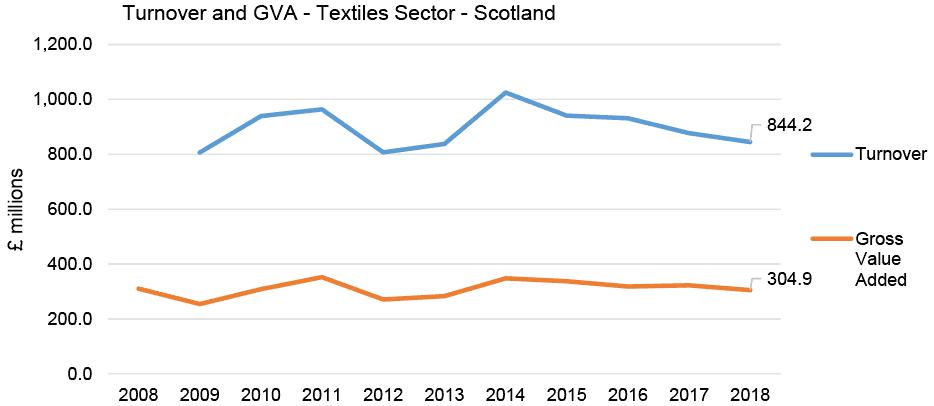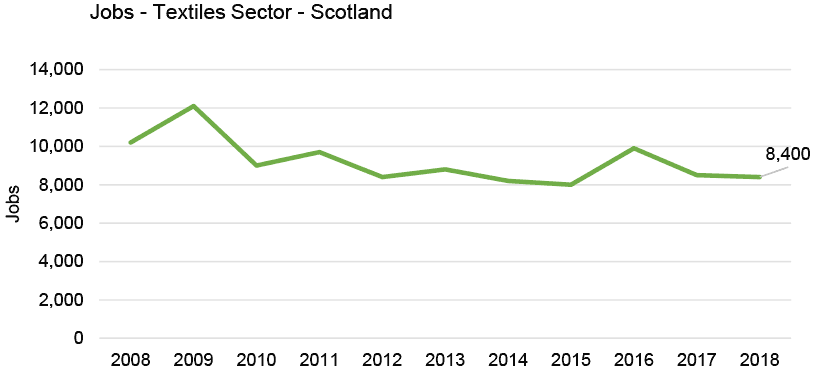Scotland National Strategy for Economic Transformation: industry leadership groups and sector groups - evidence
This paper provides summary evidence received from Scotland's industry leadership groups and other economic sector groups as part of the National Strategy for Economic Transformation engagement process.
18. Textiles and Leather Industry Leadership Group


Industry Aspirations to 2030
The industry aims to increase:
- GVA to £400 million by 2025, and to £540 million by 2030;
- turnover to £1.1 billion by 2025, and to £1.5 billion by 2030; and,
- employment to 10,000 by 2025, and to 13,000 by 2030.
Industry Opportunities
Opportunities for the textiles and leather industry include:
- strong demand growth driven by increased consumer interest in provenance and sustainability;
- an increased interest in high-end home products and the luxury knitwear category where Scotland is particularly strong;
- strong potential to benefit the Highlands and Islands Enterprise and South of Scotland Enterprise regions as the the industry is disproportionately important to these economies and is a major employer in many small towns;
- onshoring a proportion of production for the mass market in order to reduce costs associated with long lead times, which became more apparent during the pandemic. On shore production would be highly automated, fast and flexible, utilising the latest AI planning and automated production capabilities; and,
- positioning the Scottish industry at the forefront of the development of alternative, sustainable fibres by utilising the closeness of Scotland's academic institutions with manufacturing.
Industry Challenges
Key challenges for the industry are:
- limited availability of staff in some regions, which is affecting recruitment and retention of skilled staff. This is exacerbated by weak alignment within skills provision; there is a lack of technical training for skilled roles. The growth of the sector will increasingly be limited by the ability to recruit, train and retain the key skills required. As the sector mostly operates at the premium to luxury levels, the skills required are high and often take many years to fully develop; and,
- loss of free access to European markets, which has impacted some businesses.
Ongoing and Planned Activity for Industry
The textiles and leather industry is developing a number of strategic initiatives, including:
- the Export Strategy has the ambition to enter and develop new markets and to make Scottish Textiles industry internationally synonymous with sustainable luxury fashion & textiles.
- the Sustainability Strategy for the industry will be key in achieving sustainability ambitions.
- provision of modern apprenticeships in the sector has an extremely high uptake for the scale of industry, reflecting the highly skilled careers offered. There are plans to extend that provision if funding can be released. A Skills Strategy for the industry is also currently being prepared.
Contact
Email: Cornilius.Chikwama@gov.scot
There is a problem
Thanks for your feedback